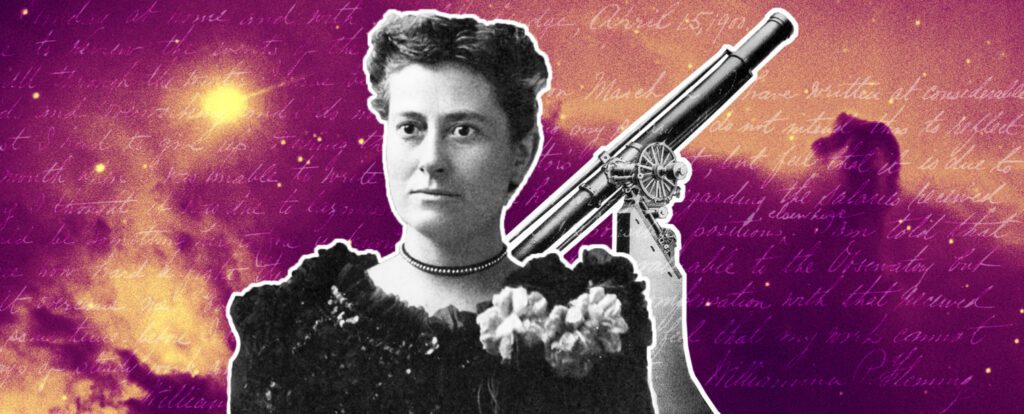Williamina Paton Stevens Fleming contributed to developing a standard star designation system and cataloged thousands of stars and other astronomical phenomena. Fleming is best known for discovering the Horsehead Nebula in 1888. But do you know how Williamina Fleming was hired?
In the 1880s, the director of the Harvard Observatory was dissatisfied with his staff and would say, “My Scottish maid could do better!” So he hired his Scottish maid. For decades, Williamina Fleming led a team that classified tens of thousands of stars and discovered white dwarfs and the Horsehead Nebula.
Williamina Fleming Working at Harvard
Charles Pickering hired her as a full-time copyist and computer, the term for someone who analyzed data at the time, at the Observatory in 1881. He had just begun an extensive program of celestial photography at the time. Williamina’s job entailed inspecting photographic plates for spectra and the breakdown of light from stars.
Williamina impressed Professor Pickering, who hired her to do clerical work at the Observatory in 1881. The Observatory was given funding in 1886 to start photographing and cataloging stars. The result was a massive data processing and organizational task. This was mostly done by Williamina, who was in charge of many women hired to do the repetitive calculations. Williamina’s most significant contribution was developing a system for classifying stars based on their spectra. Although her classification system has been improved and developed, it can be traced back to Williamina’s work. (Source: Sci Hi Blog)
The Spectra and Williamina Fleming
After some time in the field, Williamina Stevens Fleming was assigned to oversee the original examination of the photographic plates, their care and storage, and the classification of objects discovered on them. It is believed that she quickly made significant contributions to the observatory’s work due to her keen vision and logical mind. Each photographic plate was safely stored and made accessible so that it could be consulted at any time.
When enough material was available, Williamina Stevens Fleming was assigned to perform the first general photographic classification of stellar spectra. While classifying these spectra, she noticed that while a large proportion of them resemble a few typical stars, many are unusual. She discovered ten Novae and over three hundred light-varying stars by looking for bright lines in their spectra. (Source: Sci Hi Blog)
Discovering Stars and Other Objects
Williamina Stevens Fleming discovered 59 gaseous nebulae, 91 stars of the fifth type, Class O, and 69 stars of the Orion type with bright hydrogen lines. She became interested in red stars, whose spectra are of the fourth type, Class N, and appear very short on objective-prism photographs. Williamina Fleming published the results of her work measuring the position and magnitude of sequences for observing two hundred and twenty-two of the variable stars she discovered in the publication Photographic Study of Variable Stars.
Most variables are thought to have been discovered by bright hydrogen lines traversing a banded Class M spectrum. This combination of lines and bands, which she dubbed Md, was always of interest to her and was thought to be proof of the star’s variability. The Horsehead Nebula, discovered in 1888, is one of her most famous discoveries. She described the nebula as having a semicircular indentation 5 minutes in diameter and 30 minutes south of Zeta Orionis. Photographer William Henry Pickering speculated that the spot was dark matter obscuring matter. (Source: Sci Hi Blog)
Image from BbvaOpenMind
